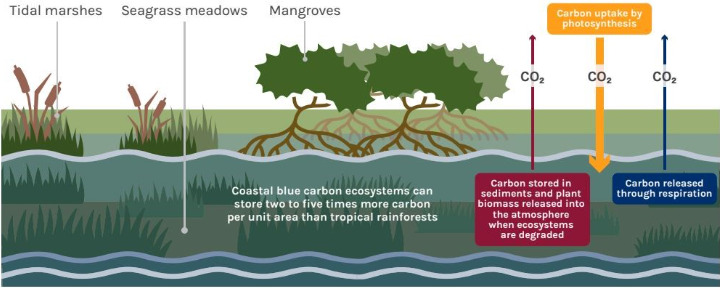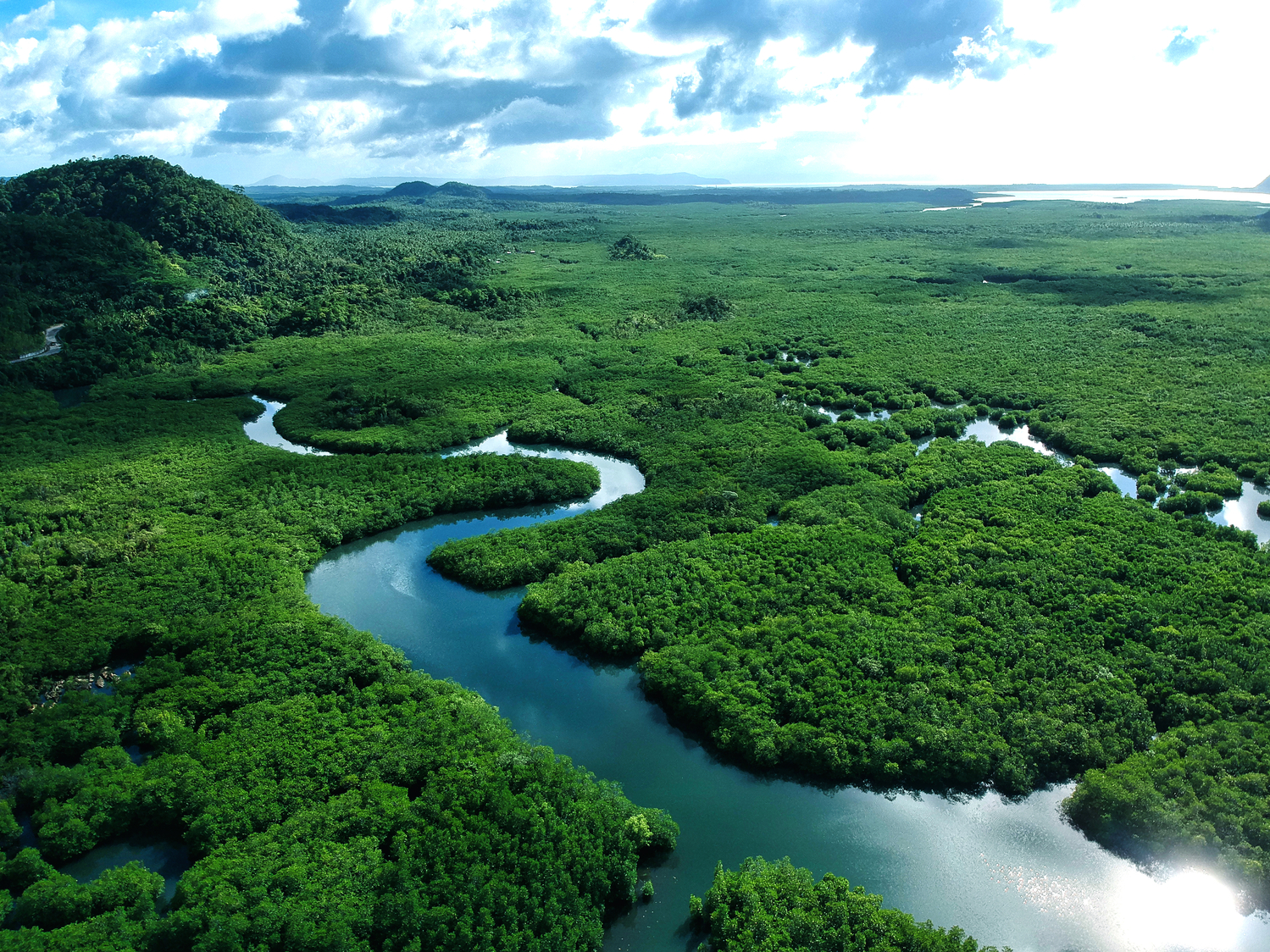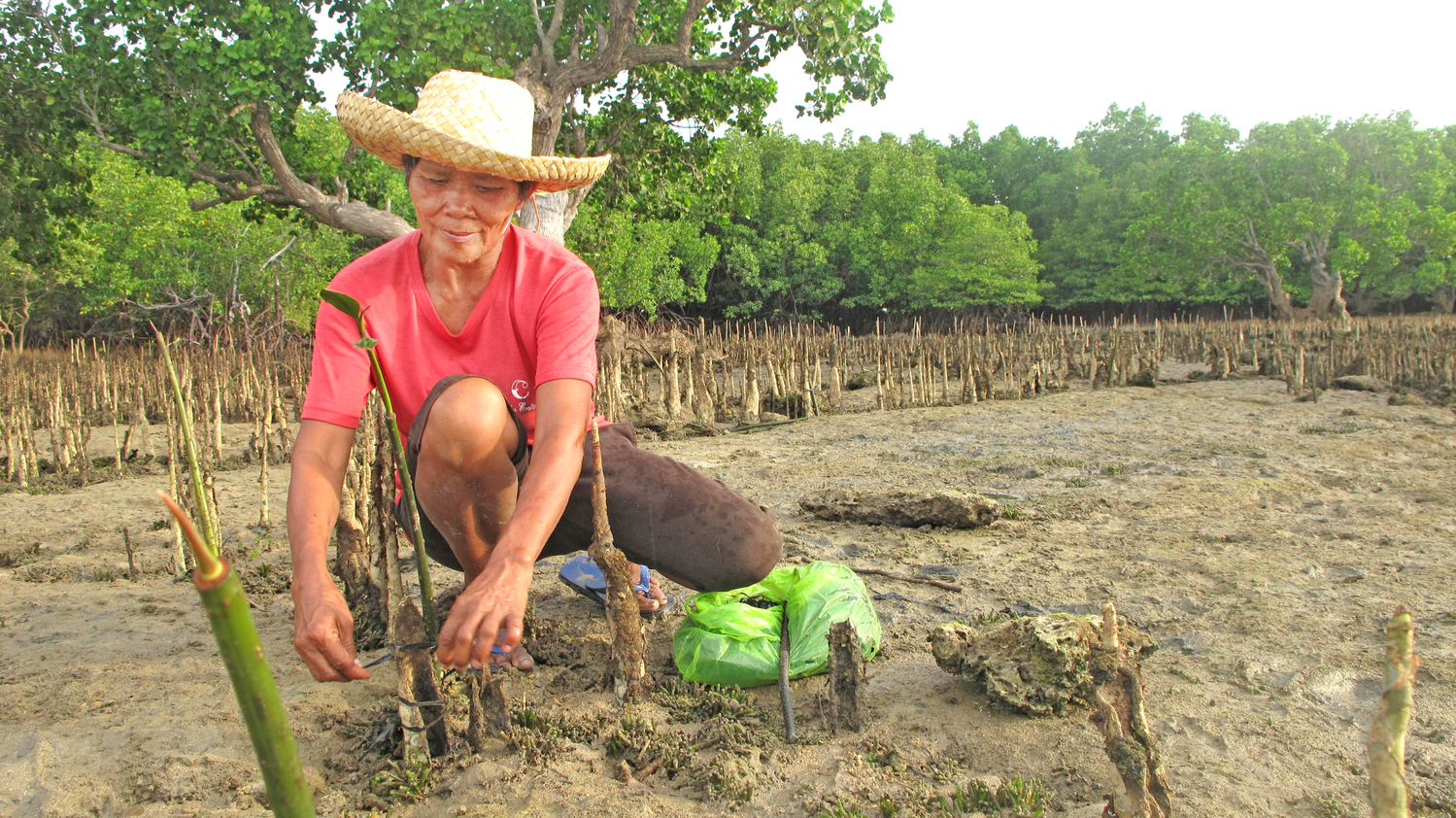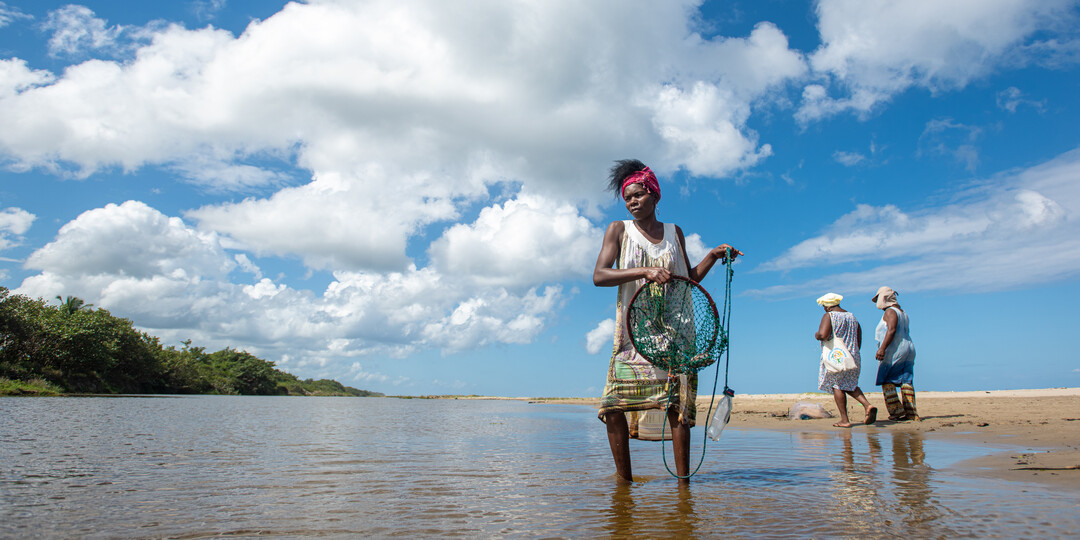Nature-based financing and blue carbon action
Protecting, restoring, and sustainably managing healthy blue carbon ecosystems, like mangroves, seagrass beds, and tidal salt marshes, are some of our best nature-based solutions for climate action and sustainable development. But the benefits of protecting coastal blue carbon ecosystems aren’t singular to sequestering or storing carbon dioxide. When we protect blue carbon ecosystems, we also enhance coastal resilience, biodiversity, local livelihoods, and food security.
Rare’s Innovative Finance team uses a range of financial instruments to develop emerging nature-based finance initiatives that protect ecosystems and support local communities. Through Fish Forever, we use behavioral insights to inspire fishing communities — fishers, fish buyers and traders, community members, and their local government — to adopt more responsible behaviors and policies related to coastal fishing and sustainable resource management to protect critical blue carbon ecosystems for people, nature, and the climate.
» Learn more below about the topics of blue carbon and nature-based solutions to climate change
» Learn more about Rare’s work and approach to sustainable fisheries management, regenerative farming, and the science of human behavior.
What Is blue carbon?
What are blue carbon ecosystems?
Why are blue carbon ecosystems important?
Threats to blue carbon ecosystems
Can we restore blue carbon ecosystems?
What are mangroves?
How do mangroves help prevent climate change?
What are nature-based solutions?
Nature-based finance
Carbon markets
What are carbon credits?
Rare’s approach to nature-based finance
How does Rare protect blue carbon ecosystems like mangroves and coastal habitats?
How do coastal communities and Indigenous Peoples protect blue carbon ecosystems?
How can governments better protect blue carbon ecosystems?
What Is Blue Carbon?
Blue carbon refers to the greenhouse gases stored in, sequestered by, and released from coastal and marine ecosystems.

What are blue carbon ecosystems?
Blue carbon ecosystems are widely recognized as marine and coastal ecosystems that sequester and store large quantities of carbon dioxide. At present, blue carbon ecosystems (BCE) refer to three vegetated coastal wetland ecosystems: mangrove forests, tidal salt marshes, and seagrass meadows. This categorization is based on the measurable extent to which these habitats can contribute to a country’s emission reduction efforts as defined in the Intergovernmental Panel on Climate Change (IPCC) Wetland Supplement.
Why are blue carbon ecosystems important?
Blue carbon ecosystems are critical for mitigating global climate change and securing the livelihoods of the millions of small-scale fishers who rely on coastal resources. Mangroves, tidal salt marshes, and seagrass beds filter pollutants, enhance water quality, and provide habitat for rich biodiversity like crustaceans, fish, sea birds, amphibians, and algae.
These critical ecosystems also improve the livelihoods of those who rely on their natural resources. Mangroves, tidal salt marshes, and seagrass beds are nursing grounds for mollusks, shrimp, fish, and other crustaceans that coastal fishers and coastal communities rely on for food security and alternative streams of revenue that strengthen their economic resilience. On a cultural level, blue carbon ecosystems are often cultural territories that hold ancestral value to local communities and coastal communities.
Threats to blue carbon ecosystems
Scientists estimate that globally, 50% of salt marshes, 35% of mangroves and 29% of seagrass meadows have been degraded or lost since the mid-twentieth century.
Coastal development and deforestation, like clearing mangroves for shrimp aquaculture and crops, are among the greatest threats to blue carbon ecosystems. Additional anthropogenic impacts include aquaculture and unsustainable fishing, which threaten these ecosystems’ health. Climate change’s effects, such as sea level rise, coastal erosion, extreme storms, and rising temperatures, further degrade critical habitat, water quality, and these critical coastal ecosystems.
Can we restore blue carbon ecosystems?
The good news is that blue carbon ecosystems are highly restorative. Blue carbon ecosystems — mangroves, seagrass meadows, and tidal salt marshes — can return to healthy states with the correct protective measures and restoration initiatives.

What are mangroves?
Mangroves are a special kind of tropical tree or shrub that grows where the land meets the sea. They tolerate salt water and thrive where most trees cannot.
How do mangroves help prevent climate change?
Mangroves help combat climate change by protecting coastlines, absorbing carbon, and promoting biodiversity. Their thick roots are a natural barrier that defends coastlines from waves, floods, and erosion. Mangroves trap and store more carbon per unit from the ocean and atmosphere than any other ecosystem. The captured carbon is stored as organic matter in the plants’ trunks, branches, stems, leaves, and roots. Mangroves also provide critical habitat for wildlife that contributes to a healthy, biologically diverse marine ecosystem. When kept healthy and intact, mangroves store and accumulate carbon dioxide in their hydric soils. However, when degraded or destroyed, the root systems that hold the soil in place release the soil and carbon making the degraded mangrove forest a carbon emitter.
Stay Connected
Sign me up for occasional emails to learn more about Rare’s work and how I can support its mission. I know I can unsubscribe at any time.
What are nature-based solutions?
Nature-based solutions are actions that harness the power of ecosystems to solve environmental challenges. As defined by the International Union for Conservation of Nature (IUCN) and internationally adopted by UNEA, nature-based solutions are “actions to protect, sustainably manage and restore natural and modified ecosystems in ways that address societal challenges effectively and adaptively, to provide both human well-being and biodiversity benefits.” Examples include restoring degraded forests or wetlands to improve water quality, creating green infrastructure in urban areas to reduce the risk of flooding, and using natural systems such as mangroves or coral reefs to protect coastal communities from storms and sea level rise.
Nature-based finance refers to financial mechanisms that support the conservation, restoration, and protection of nature.
Carbon markets are trading markets that sell carbon credits to companies and individuals to reduce greenhouse gas emissions.

What are carbon credits?
Carbon credits, also known as carbon offsets, are voluntary purchases that offset an individual or companies’ carbon emissions. One carbon credit equals the removal of one metric ton of carbon dioxide.
Blue carbon credits are carbon offsets gained from activities that protect blue carbon ecosystems. Through this innovative approach, individuals and companies can lower their greenhouse gas emissions through the protection, restoration, and conservation of mangroves, seagrasses, and salt marshes.
Rare’s approach to nature-based finance
Rare’s Innovative Finance program uses a range of financial instruments to develop emerging nature-based finance initiatives that protect ecosystems and support local communities.
» Learn more about Rare’s Innovative Finance Program.
» Learn more about green finance.
How does Rare protect blue carbon ecosystems like mangroves and coastal habitats?
Rare’s approach to blue carbon stems from its commitment to support local communities in sustainably managing and maintaining their natural resources. We achieve results through…
Community Trust
Rare cultivates strong relationships with local leaders, small-scale fishers, and smallholder farmers to build trust and better understand their motives and barriers for adopting sustainable actions.
Behavioral Solutions
With a rights-based approach to community resources, our practitioners and field experts help small-scale fishers and smallholder farmers improve practices for fisheries management plans.
Innovative Finance
Rare’s Innovative Finance program uses a range of financial instruments to develop emerging nature-based finance initiatives that protect ecosystems and support local communities.
Adaptation & Resilience
Fish Forever helps local communities design and implement marine protected areas, community-based restoration efforts, and other effective area-based conservation measures (OECMS) to sustainably manage fisheries, mangroves, and coastal resources. We also integrate ecosystem-based adaptation measures into local fisheries policy and enhance government capacity to monitor and evaluate resilience indicators.
International Policy
Rare works with global policy leaders to advance nature-based solutions, elevate the voices and perspectives of local leaders, and advocate for environmental policies that protect ecosystems.

How do coastal communities and Indigenous Peoples protect blue carbon ecosystems?
Coastal communities and Indigenous peoples are often the first to recognize the value of healthy blue carbon ecosystems. As users and guardians of mangroves, seagrass beds, and marshes, they play a fundamental role in preserving blue carbon ecosystems. Community-based conservation led by small-scale fishers, local leaders, and government officials is critical for developing sustainable blue carbon action locally and internationally.
Local and Indigenous knowledge and traditional protective customs provide valuable insights into the ecology and dynamics of coastal blue carbon ecosystems. Rare’s Fish Forever program mobilizes coastal fishing communities, their local leaders, and governments to establish community-based management of coastal fisheries based on this critical knowledge. Through sustainable behavior adoption and community-managed approaches, local coastal communities remain the essential protectors and advocates of their natural resources and blue carbon ecosystems.
How can governments better protect blue carbon ecosystems?
Protecting the world’s blue carbon ecosystems requires a holistic approach integrating adaptation, resilience, biodiversity conservation, and community livelihoods while implementing blue carbon actions and relevant financing like carbon markets. National, subnational, and local governments are important custodians of blue carbon ecosystems. Policymakers set policies and define targets related to marine ecosystem protections. As implementers and enforcers, they are often the key drivers of change. They also have the necessary role of leveraging local and Indigenous knowledge to support the development, implementation, and monitoring of blue carbon initiatives.
National governments can provide regulatory incentives to encourage the restoration of blue carbon ecosystems. Subnational governments can protect and restore blue carbon ecosystems through integrated planning, including MPAs and OECMs, coastal zone management, spatial planning, and Indigenous governance.
National commitments contributing to global goals, like nationally determined contributions (NDCs) for the Paris Agreement or national biodiversity strategies and action plans (NBSAPs) for the Kunming-Montreal Global Biodiversity Framework, can demonstrate government priorities and accelerate action for protecting coastal ecosystems.
Stay Connected
Sign me up for occasional emails to learn more about Rare’s work and how I can support its mission. I know I can unsubscribe at any time.